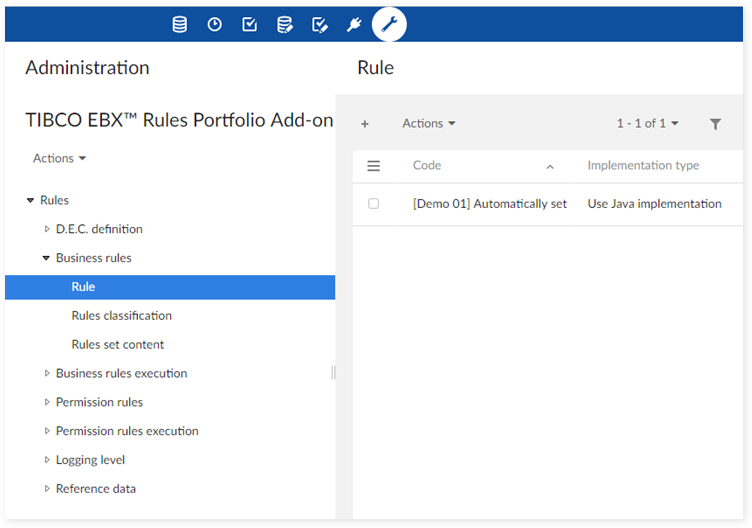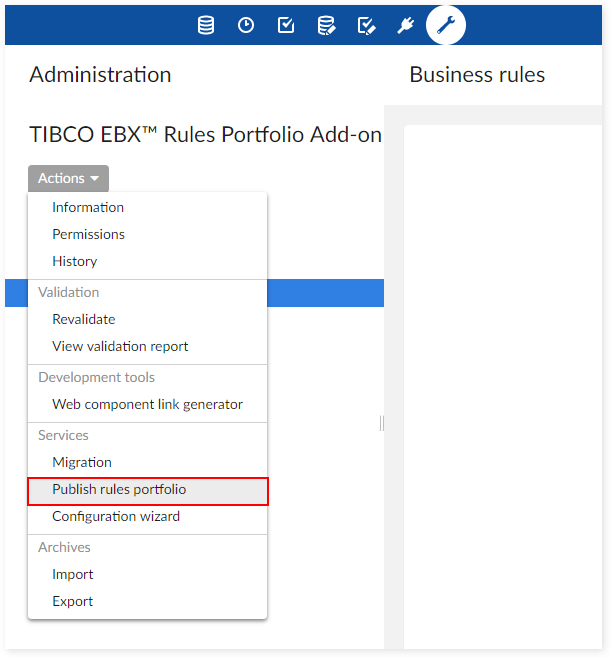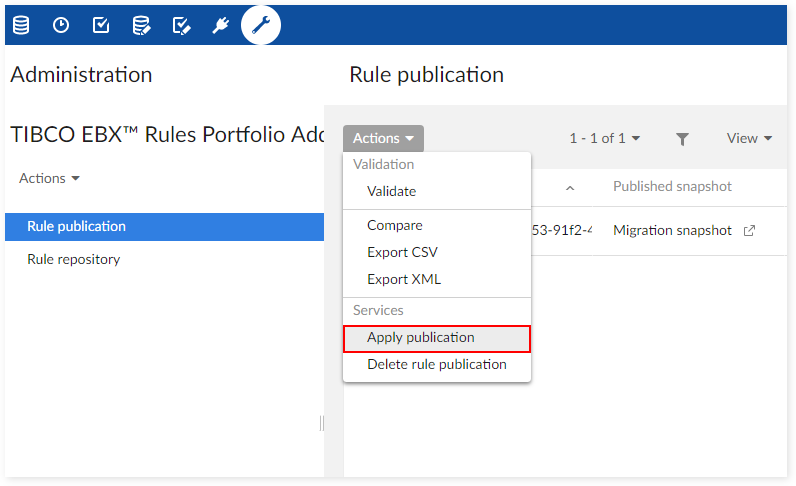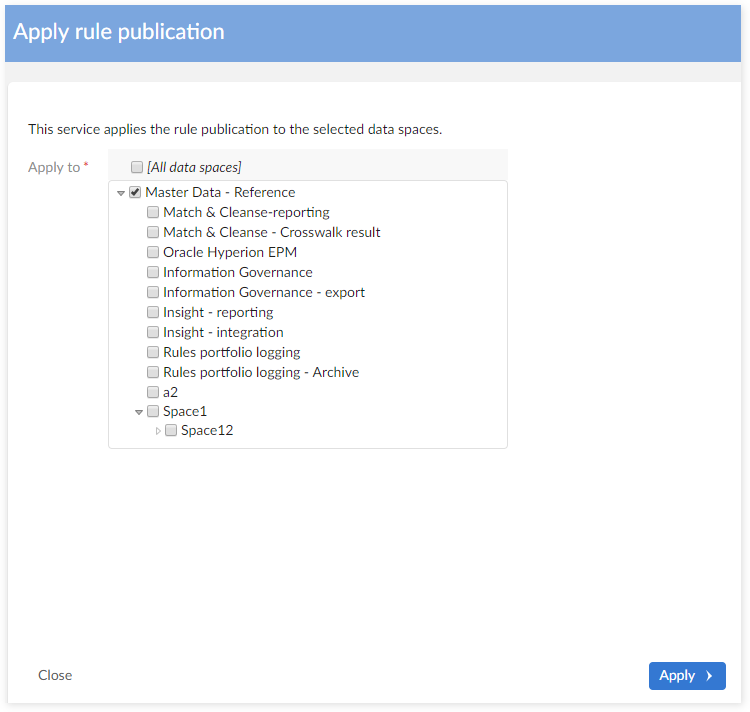TIBCO EBX® Rules Portfolio Add-on - Production
Administration domain
You can find the 'TIBCO EBX® Rules Portfolio Add-on - Production' data space under the 'Administration' tab. This data space allows you to make a stable rule configuration environment for running a rule. From the version 1.3.0 release, all rules run on the snapshot of a rule configuration instead of running directly on the rule configuration. The 'TIBCO EBX® Rules Portfolio Add-on - Production' data space stores the snapshot information of rules configuration and the mapping between the snapshot version and the data space where the rule is applied.
The 'Rule publication' table stores the published snapshot information.
The 'Rule repository' table stores the mapping of the data space which is applied by rules and snapshot version.

The 'Rule publication' table
The 'Publish rules portfolio' service creates a snapshot of the 'TIBCO EBX® Rules Portfolio Add-on' data set. One rule publication can be applied to many data spaces (or all data spaces). The rule publication properties are shown in the following table:
Property | Definition |
|---|---|
UUID | The generated unique id. |
Published snapshot | The publication of rules configuration. This is a snapshot of the 'TIBCO EBX® Rules Portfolio Add-on' data set. |
Creation user | User who publishes the rule configuration. |
Name&Description | The name and description of rules portfolio publication. |
Creation date | The date and time when the rules configuration is published. |
The 'Rule repository' table
A rule repository is the mapping between rule publications and data spaces. If the data space does not have any associated rule publication, the system will use the rule publication which is applied to [All data spaces]. The rule repository properties are shown in the following table:
Property | Definition |
|---|---|
Data space | If there is an existing publication applied to the current data space, the system uses this publication to execute rules on this data space; otherwise, the system uses the publication applied to [All data spaces] to execute rules. |
Rule publication | The rules portfolio publication which will be applied to the data space. |
Creation user | Inherited from the Rule publication table. |
Creation date | Inherited from the Rule publication table. |
The 'Publish rules portfolio' service
As shown below, the 'Publish rules portfolio' service is located in the 'TIBCO EBX® Rules Portfolio Add-on' data set's 'Actions' menu. This service publishes the current rules portfolio configuration.

Once you have run the service, you can use the publication mode option to either create a new, or overwrite an existing publication. If creating a new publication, input a name, description, and choose the data space(s) that this publication applies to. If overwriting an existing publication, specify the publication to overwrite and the required fields.
Special Notation | |
|---|---|
| "[All data spaces]" is a special value. The rule publication applied to [All data spaces] is only used when there is no existing publication applied to current data space. |

The 'Delete rule publication' and 'Delete rule repository' services
The access permission for the 'TIBCO EBX® Rules Portfolio Add-on - Production' data set is read-only, so it is unable to manually create or delete any record. The 'Publish rule portfolio' service creates records on both tables in the 'TIBCO EBX® Rules Portfolio Add-on - Production' data set. Records in the 'Rule publication' table store a snapshot's information and records and the 'Rule repository' table stores the mapping. The 'Delete rule publication' and 'Delete rule repository' services were created and activated on their respective tables to enable deletion.
To delete a rule publication, you only need to choose the publication that you want to remove and then select the 'Delete rule publication' service (shown in the image below). This service deletes not only the chosen rule publication but also the associated rule repository.

Similar to 'Delete rule publication' service, the 'Delete rule repository' service removes all the chosen rule repositories.

The 'Apply publication' service
The 'Apply publication' service is located at the 'Rule publication' table level. This service allows you to apply existed rule publication to the selected data spaces except for the data spaces that it already applies.

As shown below, you only need to choose the data space(s) that your existed rule publication applies to. The data spaces that already be applied by that rule publication will have the blur check box and the value of that check boxes cannot be changed.
